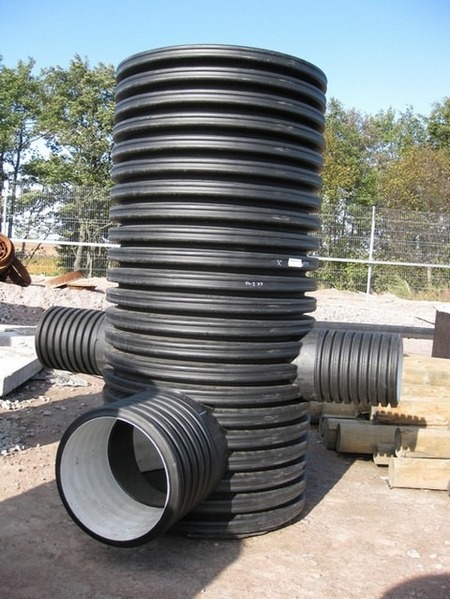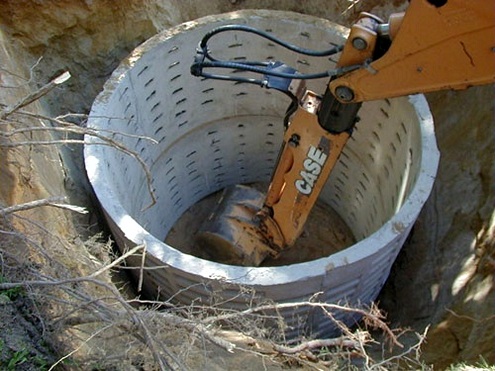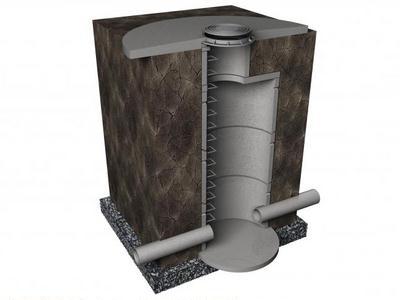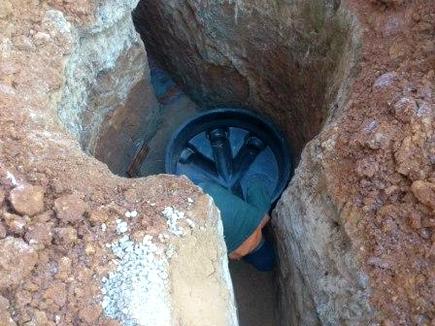Sewer well device - SNiP, types, purpose
The device of sewer wells depends on their purpose, and the required number on the design of the system - its complexity, the presence of turns and drops when laying communications, length and other features. Having understood the purpose of various types of structures, it will be easier to design the sewerage of a private house or cottage, to ensure its maximum efficiency.
Where and how sewer wells should be installed, SNIP regulates specifically and accurately. It is also important to take into account the Building Regulations and Rules because the inspecting authorities necessarily check the structures for compliance with the requirements, and if violations are found, they can issue an order to make changes to the sewage system, which will require additional costs, and the construction time will increase significantly.
Manholes
Such structures are necessary for any sewer system, regardless of its degree of complexity. Wells provide the ability to control the operation of the system and are used for its maintenance (repair, cleaning, flushing, etc.). Depending on where the observation structures are located, there are several types of them:
Important: As stipulated in SNiP, linear-type sewer wells are mounted on straight sections every 35 meters if the pipeline diameter is up to 150 mm, and every 50 meters if the pipe diameter is 200 mm.
Drop wells
Drop wells are used to change the flow rate or the depth of pipelines. They are also used when it is necessary to bypass the sewer line of any obstacle (another pipeline, etc.). In general, such structures are a vertical shaft (reservoir) with inlet and outlet pipes. Depending on the purpose, it may be necessary to install this type of sewer wells with additional devices, for example, with steps that dampen the flow rate.

There are the following types of overflow wells:
- classic well design (drainage flow through the top pipe, discharge through the bottom pipe),
- models of wells with baffle and drain wall surfaces to reduce the flow rate,
- channels with a significant slope, capable, on the contrary, of “dispersing” the flow, increasing its speed,
- complex structures of multi-stage drops.
Filtration wells
Models of wells of this type are used in sewerage systems to provide soil post-treatment of effluents partially clarified in the septic tank and to drain the liquid component of the septic tank into the ground. Structurally, the filtration well differs from others in the absence of a sealed bottom (instead of it, gravel or other filter material is backfilled). There are also options for wells with holes in the walls of the tank. Through such holes, the liquid also goes into the soil, and for its additional cleaning, filter material is also backfilled from the outside of the well at the stage of its installation.

storage wells
The principle of operation of the storage sewer well is the same as that of the one - it is a place for collecting wastewater. When organizing the drive, it is important to ensure its tightness and provide for the possibility of the access of a sewage truck to pump out the contents.
Materials for the manufacture of wells
The device of the sewer well provides for the possibility of using various materials.

Important: Brick and concrete wells need waterproofing of the walls from the outside and inside and the bottom, if we are not talking about filtration structures. Careful sealing is needed for the places where pipes enter the tanks.
- Immune to water and chemicals (e.g. detergents and disinfectants) plastic convenient for making wells. A do-it-yourself plastic sewer well can be made from a eurocube or barrels. Ready-made blocks are also on sale, which include not only the tank itself, but trays with wiring of various types.
Installing plastic manholes may require anchoring to a concrete foundation if ground or flood water rises close to the ground and there is a possibility of light structure floating. Spontaneous movement of an unfixed well under the influence of water can damage other elements of the system.
Well dimensions
When making a sewer well with your own hands, it is necessary to comply with the requirements of SNiP regarding the ratio of the diameter of the pipelines and the diameter of the structure itself.
If the depth of laying pipelines is 3 m or more, for any pipe diameter, the diameter of the well should not be less than 1500 mm.
General preparatory stages during construction
When deciding how to make a sewer well with your own hands, it should be remembered that the preparation for construction includes, regardless of the material chosen, the following steps:
- drawing up a sketch of a sewerage scheme with a mark on the location of the well,
- marking on the ground,
- removal of elements that interfere with construction (uprooting shrubs and trees, demolition of old buildings, etc.),
- arrangement of the entrance of equipment (a temporary road for the unimpeded delivery of materials and, if necessary, the movement of lifting machines).
Creating a pit for a well includes:
- excavation work (manual or mechanized method),
- leveling and cleaning the bottom,
- verification and adjustment of geometry (depth, wall slope angles).
Installation of a plastic well
The use of ready-made plastic structures, equipped with fittings, will not only save time, but will also make it possible to independently perform the installation, even in the absence of experience and training.
It is only important to strictly comply with the requirements regarding the location of structures and the choice of their size, which are determined by the totality of system parameters (pipe diameter, straightness or the presence of line turns, laying depth, etc.). The rest of the installation is carried out in several stages:
- digging a pit,
- foundation construction (sand and gravel cushion, flood base),
- installation of the structure (and its anchoring if necessary),
- connection of the well to the system.

Installation of a concrete well
The device of a sewer well made of concrete rings and bricks has practically no differences in terms of the order of installation work.
The following work is being carried out:
- Digging a pit.
- Creation of the foundation (a poured base can be performed or a ready-made concrete slab can be used). The thickness of the base is about 100 mm, the recommended brand of concrete is M50.
- Construction of the tray (carried out taking into account the number of supplies, the angles of the connection of communications, the presence of turns and other features). M100 concrete reinforced with metal mesh is used.
- Sealing (with concrete and bitumen in series) the places where pipes enter the well.
- Installation of rings with fixation with cement mortar, construction of a brick structure (after full curing of the tray concrete).
- Bituminous waterproofing of the inner surface of the walls (when building from rings, it can be done before installation).
- Seam waterproofing (for ring structures).
- Tray finishing (cement plaster and ironing technology are used).
- Arrangement of clay locks at the junction of pipes with the tank (height - 600 mm, width - 300 mm).
- Testing the structure, keeping the tank filled with water for a day (temporary plugs are installed on the pipes at this time) to detect leaks. A reinforced concrete sewer well is considered serviceable if there are no visually noticeable leaks.
- Backfilling the well with earth and tamping the soil.
- from concrete along the perimeter of the neck 1.5 m wide.



